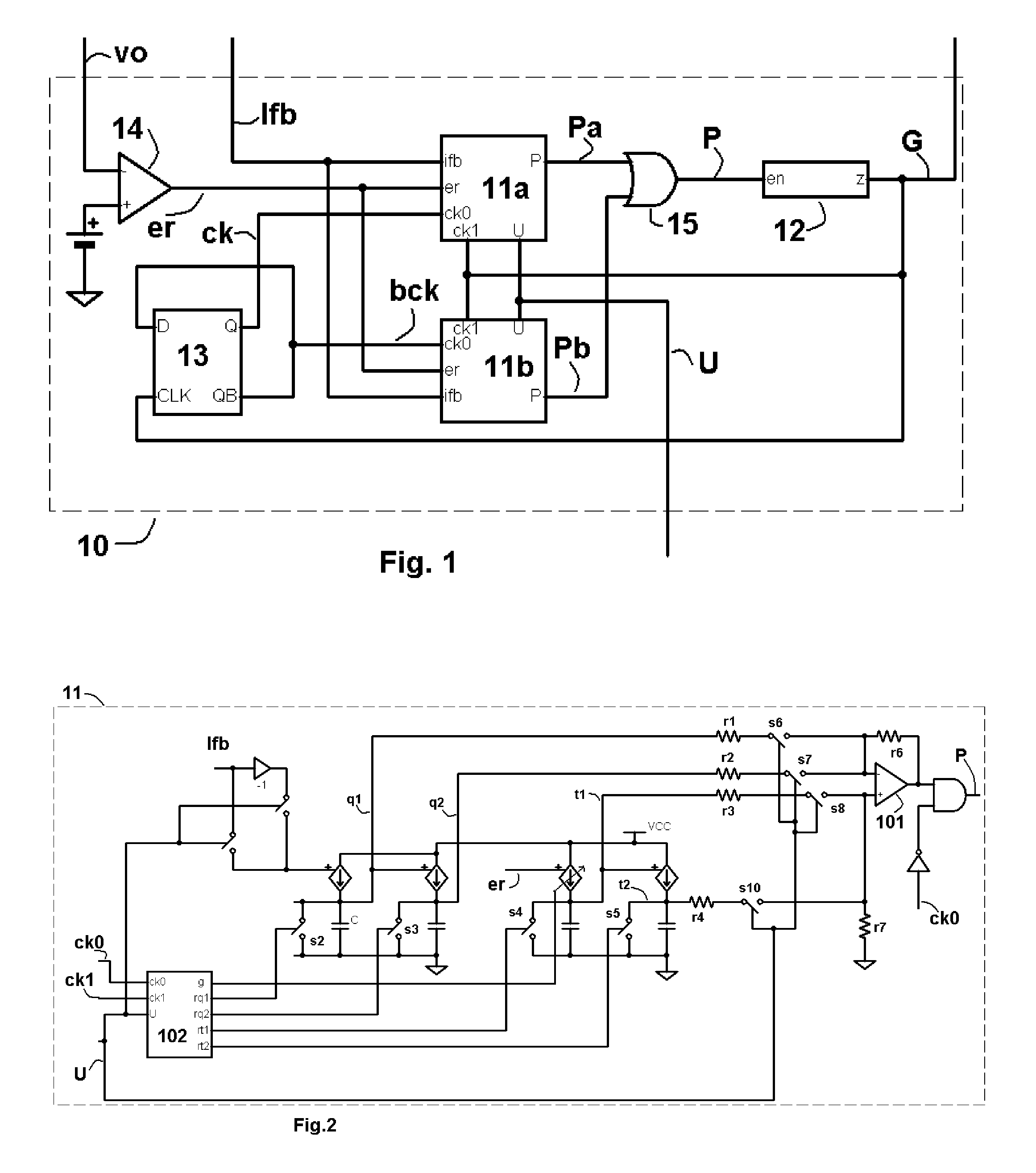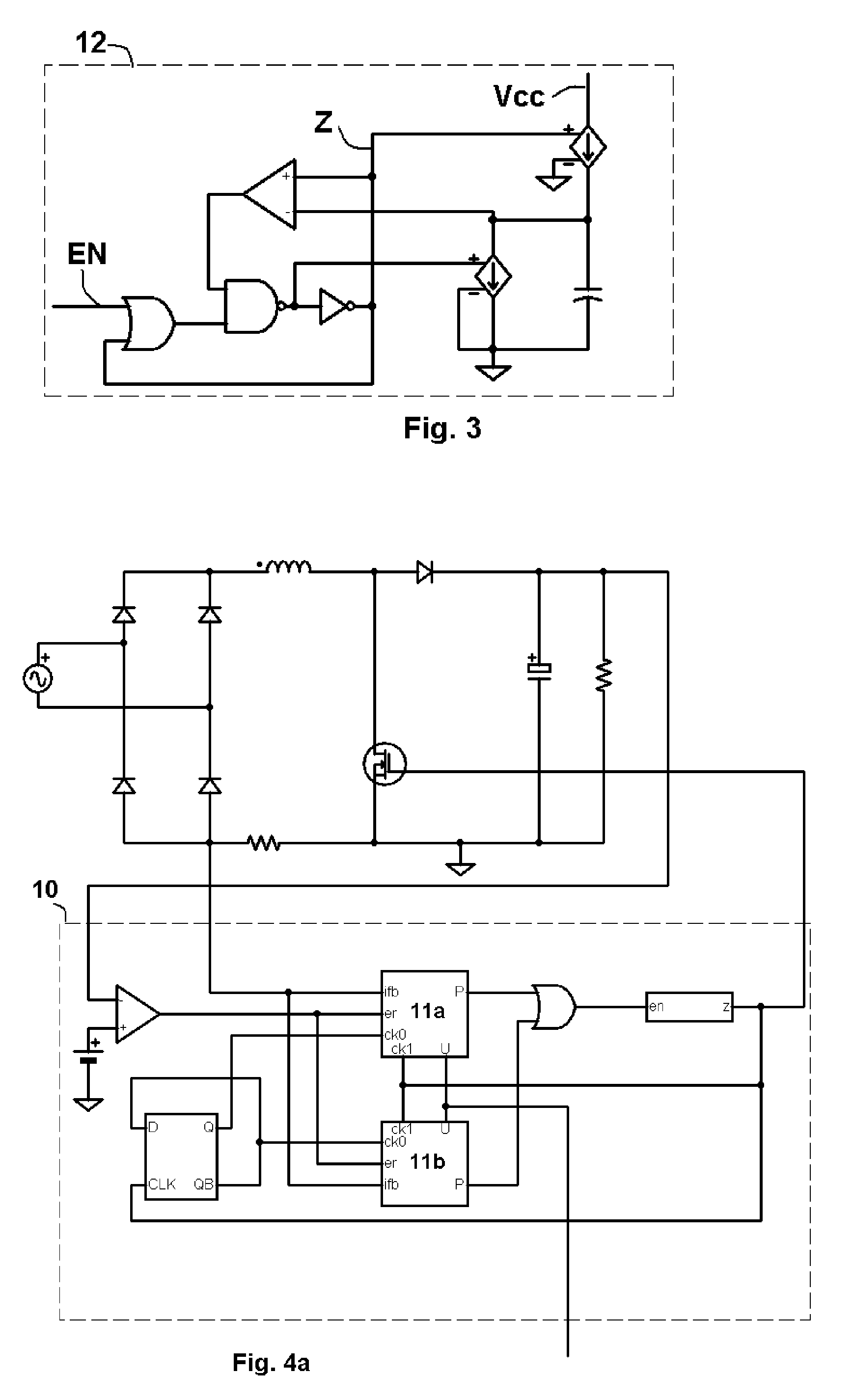Method and apparatus for active power factor correction without sensing the line voltage
a technology of active power factor and line voltage, which is applied in the direction of electrical energy, process and machine control, instruments, etc., can solve the problems of poor multiplier operation, low efficiency, and inability to detect noise and distortion in the rectified ac voltage, so as to reduce the power consumption when the load is ligh
- Summary
- Abstract
- Description
- Claims
- Application Information
AI Technical Summary
Benefits of technology
Problems solved by technology
Method used
Image
Examples
Embodiment Construction
[0039]The prior art U.S. Pat. No. 5,867,379 set forth a means to provide power factor correction without sensing the line voltage. The basic assumption behind U.S. Pat. No. 5,867,379 is that the pulse on time is unknown but the switching period is fixed. To maintain the causality of the derived equation, the same approach can only be applied to limited type of switching converters. However, by allowing the pulse on time be fixed and the pulse off time be an unknown, the causality of the derived equation can be assured in all kinds of converters. Thus Pulse Frequency Modulation (PFM) instead of PWM is used. The immediate advantage is that the resulting equations are linear and are well suitable for implementation in hardware using simple integrators. This PFM approach is the basis of the present invention.
[0040]For a boost converter working in the continuous mode, the inductor current IL, the output voltage Vo, the target output voltage Vr, the rectified line voltage Vg, the switch o...
PUM
 Login to View More
Login to View More Abstract
Description
Claims
Application Information
 Login to View More
Login to View More - R&D
- Intellectual Property
- Life Sciences
- Materials
- Tech Scout
- Unparalleled Data Quality
- Higher Quality Content
- 60% Fewer Hallucinations
Browse by: Latest US Patents, China's latest patents, Technical Efficacy Thesaurus, Application Domain, Technology Topic, Popular Technical Reports.
© 2025 PatSnap. All rights reserved.Legal|Privacy policy|Modern Slavery Act Transparency Statement|Sitemap|About US| Contact US: help@patsnap.com



